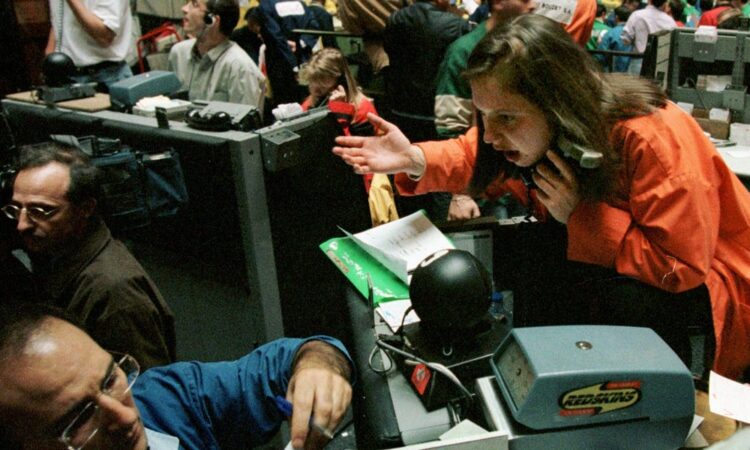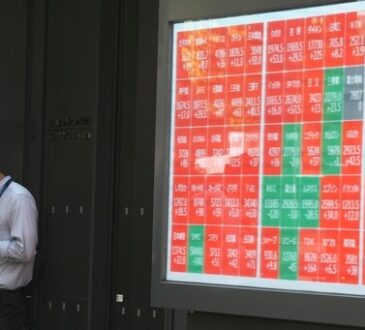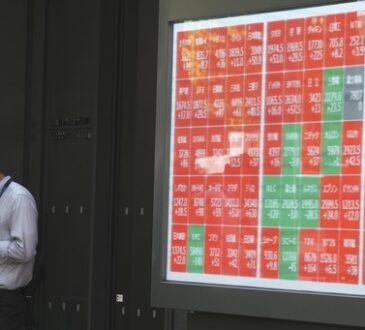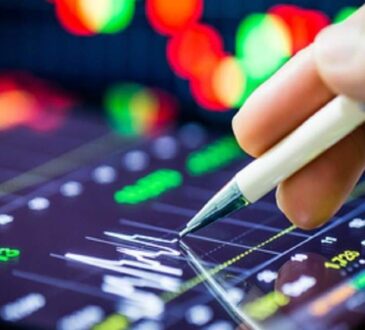
The further stocks climb into nosebleed territory, the more investor fears of a bubble grow.
But are such worries warranted? Some say no. Here’s a chart from UBS strategist Jonathan Golub, who sought to refute dot-com-bubble comparisons in a client note earlier this month. It shows the vast difference between now and then in 10-year Treasury yields, which can act as a governor on equity market performance, particularly for growth stocks.
UBS
Others take a more pessimistic view. Count John Hussman, the president of the Hussman Investment Trust who called the 2000 and 2008 stock-market crashes, among them.
In a June 23 note, Hussman shared multiple charts detailing how today’s market — by these measures at least — rivals some of the most extreme bubbles in history.
The first shows Hussman’s most preferred valuation measure: the ratio of total market cap of non-financial stocks to gross value added of non-financial stocks. The ratio is hovering close to its two highest peaks in 2021 and 1929 and well exceeds levels in 2000 and 2008.
Hussman Funds
Hussman likes the measure because of its ability to predict long-term market returns. Current levels suggest negative annualized absolute returns over the next 12 years for the S&P 500 and -9.8% annualized returns relative to risk-free 10-year Treasurys over that time.
The second chart shows the only four instances since 1990 when the S&P 500 has hit a five-year high while both the percentage of stocks listed on the New York Stock Exchange hitting one-year highs is below 50% and the share of bearish investors is below 30%, according to Investor Intelligence data.
In addition to right now, this combination has only occured in 2000, 2019, and 2022.
Hussman Funds
And third, Hussman shared a chart showing elevated risk levels for the S&P 500 when considering valuations and what he calls “market internals” — essentially an analysis of individual stock performance to identify market breadth levels and gain insight into investors’ appetite for risk-taking.
Right now, risk levels are as high as they were in 2018 and 2000.
Hussman Funds
Hussman said all of this makes for a dire outlook for stocks, especially over the long term. But he also warned of a potential market turnaround in the near future.
“Barring a wholesale shift in the quality of market internals, which are quickly going the wrong way, any further highs from these levels are likely to be minimal,” Hussman said. “In contrast, current valuation extremes imply potential downside risk for the S&P 500 on the order of 50-70% over the completion of this cycle.”
Hussman’s track record — and his views in context
Of course, these views are well outside market consensus. Top strategists at major Wall Street banks have continually raised their S&P 500 price targets this year as the market consistently hits new highs. Most expect the index to stay above 5,000 through the end of 2024.
AI advancements, a robust labor market and subsiding inflation have made it difficult to bet against the market and have changed the minds of many one-time bears like Morgan Stanley’s Mike Wilson and Piper Sandler’s Michael Kantrowitz.
But some naysayers do still exist. JPMorgan’s Marko Kolanovic expects the S&P 500 to fall to 4,200, while more extreme forecasts include Jeremy Grantham’s estimate in the low 3,000s.
For the uninitiated, Hussman has repeatedly made headlines by predicting a stock-market decline exceeding 60% and forecasting a full decade of negative equity returns. And as the stock market ground mostly higher, he persisted with his doomsday calls.
But before you dismiss Hussman as a wonky perma-bear, consider again his track record. Here are the arguments he’s laid out:
- He predicted in March 2000 that tech stocks would plunge 83%, then the tech-heavy Nasdaq 100 index lost an “improbably precise” 83% during a period from 2000 to 2002.
- He predicted in 2000 that the S&P 500 would likely see negative total returns over the following decade, which it did.
- He predicted in April 2007 that the S&P 500 could lose 40%, then it lost 55% in the subsequent collapse from 2007 to 2009.
However, Hussman’s recent returns have been less than stellar. His Strategic Growth Fund is down about 53% since December 2010, and has fallen 11% in the last 12 months. The S&P 500, by comparison, is up about 26% over the past year.
The amount of bearish evidence being unearthed by Hussman continues to mount, and his calls over the last couple of years for a substantial sell-off began to prove accurate in 2022. Yes, there may still be returns to be realized in this new bull market, but at what point does the mounting risk of a larger crash become too unbearable?
That’s a question investors will have to answer themselves — and one that Hussman will keep exploring in the interim.




